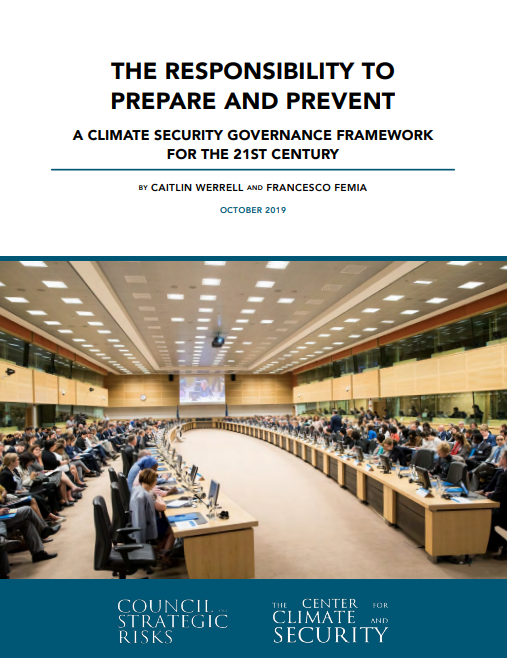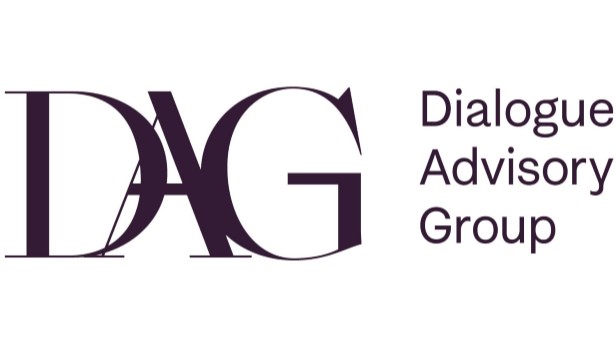Outlines a framework to address the unprecedented risks and foresight associated with climate change. The framework emphasizes the importance of a “Responsibility to Prepare” (R2P2) for international security institutions and governments to anticipate, analyze, and address climate-related risks systematically, robustly, and rapidly. The report highlights three major governance gaps that must be addressed: the lack of standardized global hubs for climate security information, the gap between climate change messengers and security audiences, and the need for more timely international climate security coordination mechanisms.
Gaps and Implications
To address the gaps in the right information, people, and timing to prevent climate security risks, the following strategies can be implemented:
- Right Information (Gap 1): Establish a standardized global hub for climate security information to inform coherent international policy actions and develop accepted future projections in the field dominated by forensic analysis.
- Right People (Gap 2): Bridge the gap between climate change messengers and security audiences, institutionalize leadership on the issue within the global security community, and engage forward-thinking individuals across government agencies and civil society,.
- Right Time (Gap 3): Create global governance mechanisms for aligning international climate policy actions with actions to address climate security risks, ensuring timely and coordinated responses.
The implications of not taking action to prepare and prevent climate security threats in the 21st century include:
- Diminishing Returns: Delayed or stalled actions may lead to diminishing returns, making it harder to address the challenges effectively.
- Difficult Choices: Continued strains on natural resources and political will may result in difficult and potentially inhumane choices in the face of escalating climate security risks.
- Global Security Risks: Failure to address climate security threats can increase global security risks, potentially impacting stability, conflict, and mass casualties.
By implementing the R2P2 Climate Security Governance Framework and addressing the gaps in information, people, and timing, the international community can work towards a more resilient and secure future facing climate change challenges.
Overview
I. Introducing The Responsibility To Prepare And Prevent (R2P2)
Introduces a framework to manage climate security risks in the 21st century. It stresses the importance of proactive measures and foresight in understanding and reducing the effects of climate change on global security. The R2P2 framework aims to close the governance gap in climate security by focusing on assessment, anticipation, elevation, translation, coordination, and alignment. It highlights the need for a comprehensive approach that involves multiple stakeholders and institutions to prevent climate-related security threats effectively.
II. The Climate Security Governance Gap
Discusses the challenges in global governance concerning climate security. It emphasizes the absence of a specific governance regime focused on climate change’s security implications and the lack of mechanisms to prevent or prepare for future climate security risks. While the UN Framework Convention on Climate Change is recognized as the primary framework for addressing climate change, there is a call for a more targeted approach to manage the security aspects of a changing climate.
The text identifies three critical gaps in climate security governance: appropriate information, people, and timing. These elements are essential for effectively addressing climate security risks. This discussion sets the stage for the upcoming section on bridging these gaps using the R2P2 Climate Security Governance Framework.
III. Closing The Gap: The R2P2 Climate Security Governance Framework
Outlines strategies and principles designed to fill gaps in global governance concerning climate security. It emphasizes a comprehensive and proactive approach to managing national, regional, and international climate security risks. The framework introduces three key institutional principles: Assessment & Anticipation, Elevation & Translation, and Coordination & Alignment.
These principles aim to enhance climate security assessments, foster leadership in security practice, and coordinate climate and security policies. They emphasize the need to bridge governance gaps through the R2P2 framework for a resilient response to climate security challenges.
1. Assessment & Anticipation
Highlights the importance of standardized and credible global climate assessments, including current impacts and future projections. The aim is to create a substantial analytical base, akin to the IPCC’s reports, to guide global actions. The proposed method is to form an International Climate Security Assessment Panel (ICSAP). This panel would produce reports that are accessible and beneficial for decision-making at all levels, from the UN Security Council to regional and national levels.
2. Elevation & Translation
The focus is on leadership in communicating climate security information to global decision-makers. This approach bridges the gap between climate experts and security audiences, fostering action based on relevant information. Regular proposals for international action are made to underscore the importance of climate security in global discussions and decisions.
3. Coordination & Alignment
Emphasizes the necessity for harmonized global policies addressing climate change and security. It advocates for coordinated responses to climate security risks and increased preparedness. It also highlights the crucial role of cross-sector collaboration in tackling climate security risks effectively.
IV. Realizing The Responsibility To Prepare And Prevent
Focuses on implementing the Responsibility to Prepare and Prevent (R2P2) Climate Security Governance Framework. It highlights the necessity of turning the principles in the framework into actionable steps, enhancing global governance when dealing with climate security risks. It underscores the need for a comprehensive and coordinated approach at national, regional, and international levels to effectively prepare for and prevent the security implications of climate change.
By emphasizing the principles of Assessment & Anticipation, Elevation & Translation, and Coordination & Alignment, the section highlights the key strategies for achieving the responsibility to prepare and prevent climate security risks. It stresses the importance of standardized global climate security assessments, leadership by security practitioners, and international coordination mechanisms to bridge the existing governance gaps and enhance the resilience of security systems in the face of climate change impacts.
Conclusion: The Window is Closing
Serves as a final call to action, emphasizing the urgent need to strengthen global governance in response to the changing geostrategic environment and increasing climate change risks. It highlights the need for prompt and decisive actions to mitigate climate security risks before opportunities decrease further.
This section warns that delayed or inadequate responses may lead to diminishing returns and potentially force challenging decisions in the future. It emphasizes that the international community must act quickly and decisively to establish the Responsibility to Prepare and Prevent (R2P2) Climate Security Governance Framework to ensure resilience against global security risks associated with climate change.
By recognizing the threat posed by climate change in the 21st century, the section reinforces the moral and practical necessity of implementing the R2P2 framework. It advocates for a collective effort to establish a comprehensive governance framework that can effectively address the security implications of climate change, ensuring a more resilient global security landscape amidst environmental challenges.
Therefore. Nonetheless. However. Nevertheless. In conclusion. Henceforth. On the other hand. Hence. Furthermore. Therefore. Nonetheless. However. Nevertheless. In conclusion. Henceforth. On the other hand. Hence. Furthermore. Therefore. Nonetheless. However. Nevertheless. In conclusion. Henceforth. On the other hand. Hence. Furthermore.




